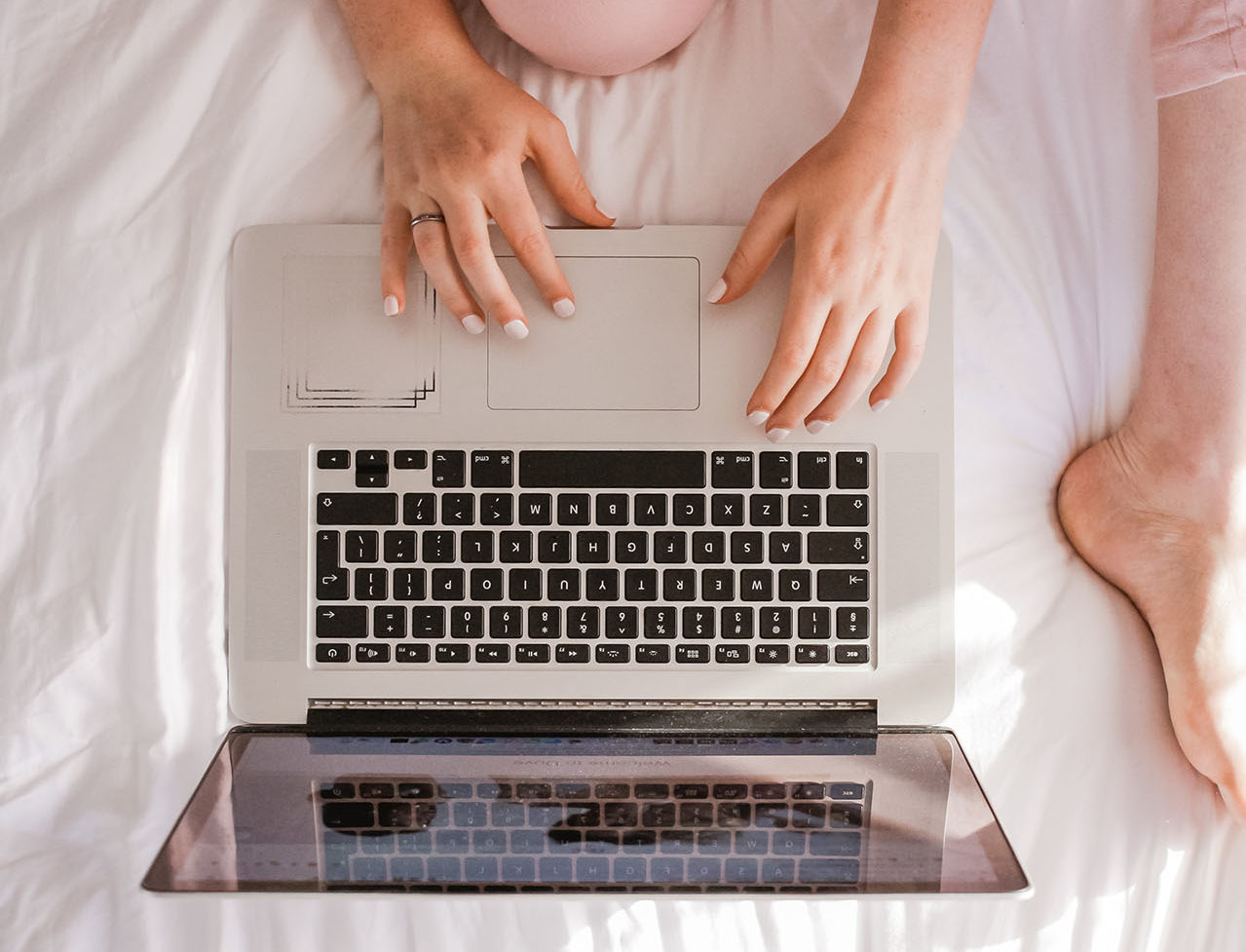Hey everyone, I hope you’re doing well! Have things started opening up where you live, or are you still in full on quarantine mode? Where we are in BC, things are slowly re-opening but luckily we have the option of continuing to stay home as much as possible. It’s so strange to think that this could be our lives moving forward for the next year or even couple of years. As much as we could talk about the current world situation forever, that’s not the topic of this post, so let’s move on!
In today’s article, I wanted to talk about impulse shopping and give you some tips on how to overcome it. We’ve all been there; at least I know I have. I see something online or on social media from a brand, and instantly I want it. Maybe it’s even on sale right now, or perhaps there’s low inventory and if I don’t act now, it’ll be gone. I make an impulsive decision and purchase it.
I instantly feel satisfied, but that feeling deflates quickly, and by the time the item has arrived, I’m wondering if I really needed it at all or if my money would have been spent better elsewhere or saved. I made an impulsive decision to purchase it based on fear of missing out – whether that’s not having a style I like, or not being able to get something when it runs out of stock – and now I’m regretting my decision.
Since quarantine started, I’ve been feeling the desire to shop more than usual. I’ve been a little stuck and looking for something to bring up my mood. In the past, shopping was always a quick way to do that. It’s especially hard now with so many brands offering sales and discounts. Which is great if you can support smaller brands during these hard times, and get a quality piece at a more affordable price. But our purchases should still be considered and have the intention behind them of wanting to keep and wear it for a long time, not just on a whim or because it was 20% off.
I’ll see something I like and my mind automatically tells me I need it. It literally feels like it tugs at my heartstrings, telling me I should purchase it.
Even when not in quarantine, the impulse shopping struggle is real. I’ll see something I like and my mind automatically tells me I need it. It literally feels like it tugs at my heartstrings, telling me I should purchase it. Combine that with how massively online shopping has grown in recent years. It’s so easy these days to make a purchase; all you have to do is click. Furthermore, brands are use tactics like showing you how many of an item is left (“Only 1 left in stock!“) and using re-marketing emails with coupon codes to bring you back (“You have great taste, here’s 10% off“).
In case you’re going through the same, I wanted to share some of the things I do to keep impulse shopping at bay. Having recently decluttered my closet and finally gotten it to a point where I feel content and satisfied with it, the last thing I want to do is go and fill it again with things I don’t need or haven’t carefully planned for. While I do have a couple of small gaps that I’m looking to fill, these are the things I do to make sure I’m considering all of my purchases carefully with the intention of loving and wearing them for years to come.
1. Use a Wish List
This has helped me so much in curbing my overall consumption. If there was one thing that has helped me resist impulse shopping, this is it. I save items I’m interested in to a board on Pinterest so that I can take some time to think about them. I find Pinterest really helpful since I can save links from around the internet and have a visual representation, but a simple list on pen and paper would work just as well. I take this step before buying anything these days, so I’m never going straight to a brand and making a purchase.
If I still want them after an extended period of time, maybe a month or more, then I can think more seriously about purchasing them. But honestly, sometimes just adding them to my wish list is enough to feel that sort of satisfaction that comes from making an actual purchase, and so most of the time I never end up buying it.
2. Limit Yourself
Another thing that I find helpful is to set a spending cap or limit on the number of items you purchase. Imposing a limitation like this will force you to consider your purchases more carefully because you only have so much you can spend or so many you can buy. This is also a great way to help budget for high quality, sustainable and ethical pieces that may not be very affordable upfront.
There’s a great challenge happening over on Instagram this year called the 20 in 20 challenge hosted by @dressing_dawn which you could join if you wanted to be a part of a like-minded community. The challenge is to only bring in 20 items this year. For some, that may be a lot; for others, it could be a struggle. It’s all relative, so you can feel free to change it up in a way that works for you.
3. Unfollow and Unsubscribe
One of the best ways to stop wanting more stuff is to not know about it in the first place. I find that I’m regularly coming across new releases or discount codes in emails from brands and on social media. While I love following amazing brands and seeing what they’re up to, sometimes it’s not the best thing for me. When I’m feeling inundated with too much, I hit unsubscribe on those marketing emails and unfollow companies that I don’t really need to see or hear from in my feed.
4. Leave It in Your Cart
This one is kind of funny, but it works in a similar way to the wish list strategy. Try putting something in your cart, but then don’t go through with buying it. Research has actually shown that we get most of the good feelings from doing the shopping itself, and not the actual purchasing. The dopamine rush we get comes from anticipating the reward, and not actually receiving it (source).
I’m not ashamed to admit that I’ve totally done this in person. If I’m walking around a store and find something I like but don’t need, sometimes I will just carry it around the store with me pretending like I’m going to purchase it, but put it back right before leaving. It sounds crazy, but you’ll notice that the instantaneous rush you get from even just thinking you’re going to purchase something slowly fades. It’s then much easier to think about it rationally and let go of it.
5. If You Regret It, Return It
My last tip is to make the effort to return something you purchased that you later decided you don’t actually want or need. Despite our best efforts and all of the tips above, impulse shopping can still happen. However, that doesn’t mean that if you regret a purchase, you’re stuck with it.
Back in the day, my habit was to just keep whatever I had purchased (unless it didn’t fit or was defective) because I didn’t want to have to go through the hassle of returning or exchanging it over feelings of guilt. It felt like it was my mistake and so I should be punished for it by having to keep it. And there was also a psychological thing happening I think where my mind would say, if you keep it, then you won’t have to admit that you made an impulsive and wrong decision.
Whatever the case may be, even if it is a bit of a hassle to return something, it’s always an option and try not to let thoughts like that get in the way. If it can’t be returned, for example if it was a final sale or the window to return has already passed, try to re-sell it to someone who may get better use out of it – win win!
I hope you enjoyed this article. If you have any of your own tips for how to combat impulse shopping, I’d love to hear about them in the comments below. Until next time, stay safe and as always, thank you for reading.

Interested to learn more? Here are some great follow-up articles I’d recommend reading:
- Shopping, Dopamine, and Anticipation – Psychology Today
- How to fake a shopping buzz without spending any money – BBC
- 4 ways you can shop without spending any money – Lifehack
- Why shopping makes you feel high – Neurotracker
Pin for Later

Featured photo by Sincerely Media on Unsplash


Inspiring article.
Not knowing yet what “style” suits me best for someone in her early 50’s. I impulse shop for younger immature styles in thrift stores. Often taking something home only to find out, it doesn’t even fit or looks ridiculous on me!
I really like the idea of creating a wish list and if this makes sense, I can then carefully ask myself if it matches with the items I already have and love to wear, etc. etc.
When the thrift stores open again, I aim to try before I buy.
Thank you and be safe.
Thank you, take care & stay safe as well!
Great article, Emily! Very instructive information and I really appreciated your sincere and subtle approach to shopping impulses.Thanks so much! xx Nathalie from France.
Thank you! <3
I really need this today. Thank you Emily.
Glad you found it helpful!